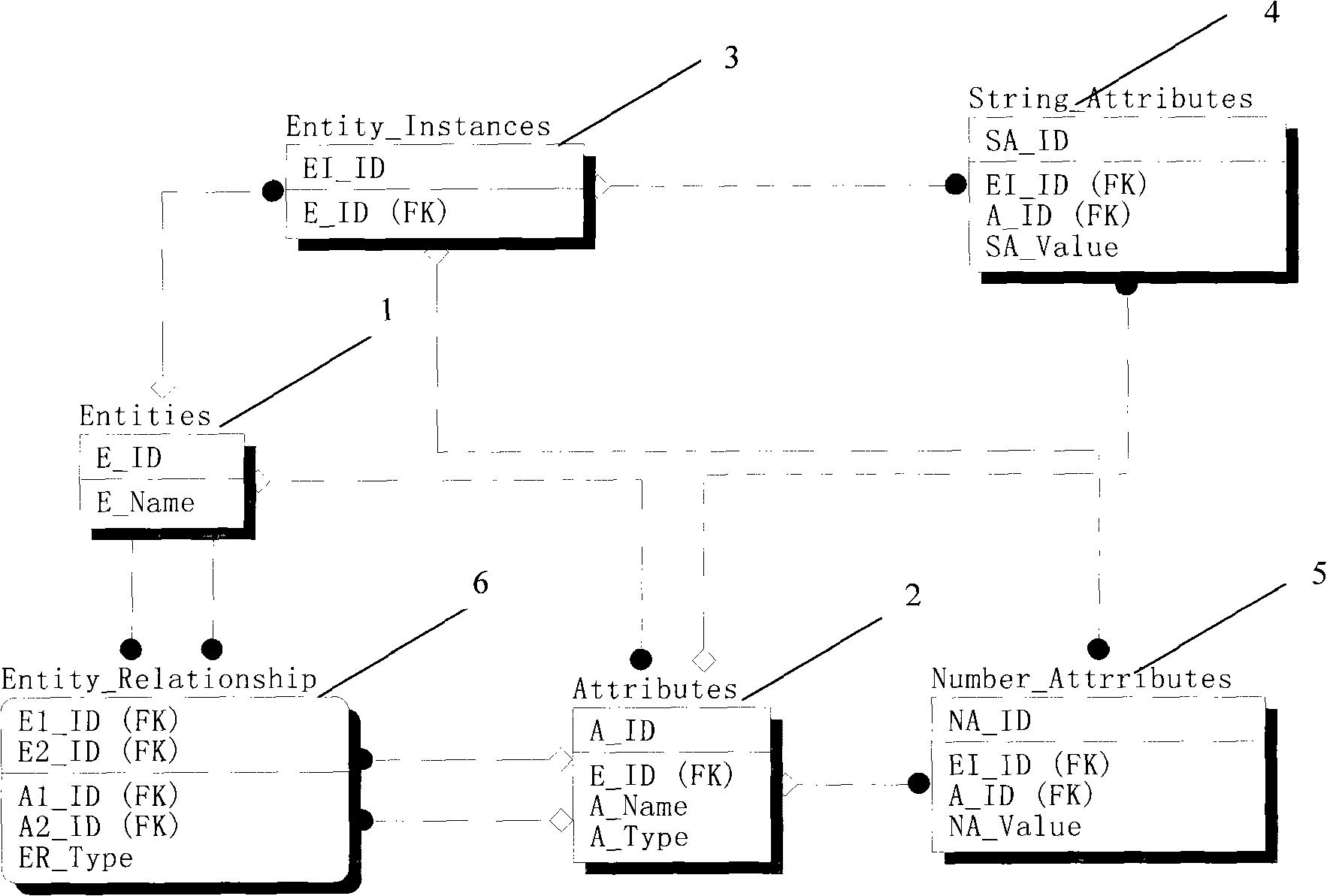Object relationship mapping model with fixed database schema
A database and model technology, applied in the field of database models, can solve problems such as no connection, no way to determine the structure of database tables, etc., and achieve the effect of reducing differences
- Summary
- Abstract
- Description
- Claims
- Application Information
AI Technical Summary
Problems solved by technology
Method used
Image
Examples
Embodiment Construction
[0012] The entity table (1) stores the entity type name information, and the attribute table (2) stores entity attribute name and data type information, which together store the structure information of the entity. The entity instance table (3), the character string attribute table (4) and the numeric attribute table (5) together store the entity instance information. The entity relationship table (6) stores the relationships between entities.
[0013] In order to have a clearer understanding of the present invention, the following examples illustrate how to create and delete entities, how to add, delete, modify, and check entity instances, and how to create and delete relationships between entities. In actual use, it is easy to program the following formal description steps in an object-oriented language, thereby improving versatility and access efficiency.
[0014] The traditional way to create and delete entity types is to use SQL statements-CREATE TABLE and DROP TABLE. Since ...
PUM
 Login to View More
Login to View More Abstract
Description
Claims
Application Information
 Login to View More
Login to View More - R&D
- Intellectual Property
- Life Sciences
- Materials
- Tech Scout
- Unparalleled Data Quality
- Higher Quality Content
- 60% Fewer Hallucinations
Browse by: Latest US Patents, China's latest patents, Technical Efficacy Thesaurus, Application Domain, Technology Topic, Popular Technical Reports.
© 2025 PatSnap. All rights reserved.Legal|Privacy policy|Modern Slavery Act Transparency Statement|Sitemap|About US| Contact US: help@patsnap.com


